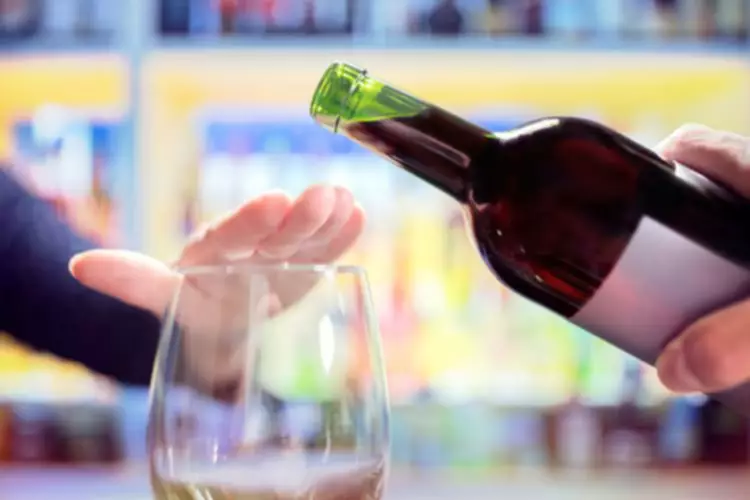
No matter the situation or the person, any amount of alcohol ingested can impact your driving ability. However, the effects that alcohol can cause can vary from person to person. Let’s take a look at some of the most common ways drinking affects driving. However, some people may need to drink less to keep their blood alcohol concentration (BAC) under 0.05% and drive safely.

Day, Time, Distance, and Place of Last Drink

The 2015 National Survey on Drug Use and Health reported that of people 18 years or older, 86.4 percent have drunk alcohol at some time in their lives, 70.1 percent drank in the past year, and 56.0 percent drank in the past month (SAMHSA, 2016). These data run counter to the misperception that drinking is more widespread than it actually is, particularly among college-aged students, for whom drinking prevalence is commonly overestimated (Baer et al., 1991; Martens et al., 2006; Perkins et al., 2005). Research suggests that for those who do consume alcohol, drinking varies with respect to frequency, quantity, the rate at which people drink, and preferred alcoholic beverage and/or combination. More than 50 percent of Americans don’t know that alcohol consumption increases cancer risk. And in a state such as Connecticut — ranking in the top 20 states with the most alcoholics — spreading the knowledge about the cancer risk of alcohol is of even more importance.
- By making smart decisions and planning ahead, we can all help keep the roads safe for everyone.
- Indeed, participants in the current study showed a poor ability to judge their own driving performance, rating it as being relatively consistent across the treatment conditions.
- Participants were required to attend a screening visit and three testing visits at Swinburne University of Technology Centre for Human Psychopharmacology in Melbourne, Australia.
- However, the effects that alcohol can cause can vary from person to person.
- Drinking under the influence increases the risk of engaging in a road accident and this can lead to fatalities.
- However, it’s essential to keep in mind that each person reacts differently to alcohol.
Dangers of Drinking and Driving: How Does Alcohol Affect Your Driving?
- Findings from the 2006 Behavioral Risk Factor Surveillance System (BRFSS) showed that the prevalence of alcohol-impaired driving was high for binge drinkers across educational and income categories,14 including those who had attended college and had high annual incomes (Flowers et al., 2008).
- There are often fewer witnesses to call for help in rural locations, and help is often farther away.
- Distracted driving has increased over time and contributes to an increasing amount of motor vehicle crash fatalities per year (Wilson and Stimpson, 2010).
If you drive while impaired, you could get arrested, or worse — be involved in a traffic crash that causes serious injury or death. “The higher risk for cessation compared with abstention may be due to longer term effects related to prior alcohol consumption,” the researchers say. According to Vasiliou, though there is a consensus that more alcohol leads to higher cancer risk, the precise amount of alcohol that elicits its various health repercussions — including cancer — is not known. However, according to Nunez-Smith, some New Haveners aren’t as comfortable with trusting health information from outside sources. To work around this, Nunez-Smith believes that community leaders can partner with public health professionals and raise awareness about the link between alcohol and cancer effectively, potentially through workshops or town hall meetings.
Decide Against Drunk Driving with These Resources
Understanding the psychological effects of alcohol on driving is essential for everyone who gets behind the wheel. By recognizing how alcohol influences your mood, judgment, and decision-making, you can make informed choices to protect yourself and others on the road. Law enforcement officials advise drivers to never operate a motor vehicle after consuming any level of alcohol. There is no one answer for why people drive drunk, as the reasoning can change depending on the person, situation, location, and other factors.


An ignition interlock device can not only fulfill your DUI requirements, but it can hold you accountable for driving under the influence. My frightening brush with a drunk driver made me wonder about what practices and policies could help prevent such accidents and fatalities — and question consequences of driving drunk include: yet again whether motorists are fully aware of the importance of responsible consumption before getting behind the wheel. This is the reason why intoxicated individuals will stagger and have a hard time walking in a straight line. This is because driving a car requires fine motor skills, all of which make use of different body parts.
- Prices of alcoholic beverages sold for off-premises consumption have become significantly more affordable from 1950 to 2011.
- Alcohol impairs vision, reaction time, coordination, and judgment, all of which are essential to safe driving.
- He has a nursing and business/technology degrees from The Johns Hopkins University.
- Beverage availability in on- and off-premises drinking establishments is an important consideration for alcohol pricing and taxation, which is discussed in Chapter 3.
- This small device gets wired to the car electronics and will require a breath sample before starting the engine.
What Is Drunk Driving?
This small device gets wired to the car electronics and will require a breath sample before starting the engine. The social consequences may include job loss or difficulty finding future employment—especially in roles that require a clean driving record or high levels of trust. This rate includes alcohol-related crashes involving a driver with a BAC of 0.01% or greater.

- It is important for future research to continue to establish how specific driving-related cognitive skills are impacted by alcohol and investigate possible discrepancies between objective and subjective measures of impairment, specifically at legally permissible BAC limits.
- You may also experience a decline in your self-control and reasoning at this level of intoxication.
- Survivors of drunk driving accidents, and even the families of those who have lost loved ones in such accidents, may suffer from emotional trauma, including post-traumatic stress disorder (PTSD), depression, and anxiety.
- For more information about alcohol’s effects on the body, please visit the Interactive Body feature on NIAAA’s College Drinking Prevention website.
- The higher the resulting number, the more likely the person is suffering impairments that make them a danger to themselves and others on the road.
- Another way drinking affects driving is that it can negatively impact your vision.
- If a driver is under 21 years of age, there is a Zero Tolerance Policy and even a BAC of .02 can lead to arrest and conviction.
Auditory feedback included the sound of the engine, braking, accelerating, and driving off-road. The 105-km highway driving scenario developed by Forum8 AU Pty Ltd resembled the Princes Highway, Victoria, and was tailored to Australian traffic situations, including common traffic drug addiction treatment signs, vehicles, and scenery. A driver may face civil lawsuits in addition to criminal charges from the person they injured or their family if a loved one died in a car accident. The driver may be required to cover medical bills, lost wages, funeral expenses, and other finances to compensate for the victim and/or family’s pain and suffering. There may be additional money asked for to punish the driver for reckless behavior and discourage future incidents.

